Football cleats are more than just footwear; they’re a crucial part of a player’s performance on the field. The right pair of cleats can enhance speed, agility, and stability, giving players the edge they need to outmaneuver their opponents.
With the variety of options available, choosing the perfect pair can be daunting, but understanding the key features can make the decision easier.
From studs to materials, every aspect of a football cleat is designed with a specific purpose in mind. Whether it’s for playing on grass, turf, or artificial surfaces, the cleats you choose can significantly impact your game.
This guide will explore the essential factors to consider when selecting football cleats, ensuring you make an informed choice that enhances your performance.
Types Of Football Cleats
Football cleats come in various types, each designed for specific playing surfaces and conditions. Selecting the right type can enhance a player’s performance and reduce the risk of injuries.
Firm Ground Cleats
Firm ground cleats are ideal for natural grass fields that are dry or slightly wet. These cleats usually have conical or bladed studs which provide stability and traction on firm surfaces. Nike’s Mercurial series and Adidas’ Predator line are popular examples of firm ground cleats.
Soft Ground Cleats
Soft ground cleats work best on wet, muddy, or soft grass fields. These cleats feature longer, often removable, metal studs that offer deeper penetration into the ground, ensuring better traction. Examples include the Puma King and Adidas Copa Mundial.
Artificial Ground Cleats
Artificial ground cleats are designed for artificial turf surfaces. These types of cleats have smaller, more numerous studs compared to firm and soft ground variants, ensuring excellent grip and reduced stud pressure. The Adidas Mundial Team and Nike Tiempo Legend are examples of artificial ground cleats.
Indoor Cleats
Indoor cleats are specialized for indoor soccer or futsal games played on hard surfaces such as wood or synthetic courts.
These cleats feature a flat, rubber sole that provides grip and control without damaging the playing surface. The Nike Lunar Gato II and Adidas Samba are examples of indoor cleats.
Why Are Football Cleats Important?
Football cleats are crucial for American football due to several key factors that enhance a player’s performance, safety, and overall game experience:
Traction and Stability
Football cleats are designed with specialized spikes or studs that provide traction on various playing surfaces, such as grass, turf, or artificial fields.
This traction helps players maintain their footing during quick starts, sharp cuts, and sudden changes in direction, reducing the risk of slipping and falling.
Injury Prevention
Proper football cleats can help prevent injuries by offering support and cushioning. The right cleats can reduce the risk of ankle sprains, strains, and other foot-related injuries.
Cleats with good arch support and cushioning absorb shock and distribute pressure more evenly, which is crucial during high-impact plays.
Performance Enhancement
Cleats tailored for football are designed to enhance a player’s performance. The grip provided by the cleats allows for more explosive acceleration, better control during turns, and stability when changing direction. This can make a significant difference in a player’s agility and speed on the field.
Comfort
Football cleats are designed to fit snugly and offer comfort during the game. Well-fitting cleats reduce blisters, hotspots, and general discomfort that can affect a player’s focus and performance.
Proper cushioning also ensures that players can endure the physical demands of the game without excessive strain on their feet.
Field Adaptability
Different playing surfaces require different types of cleats. For instance, cleats with longer studs are better suited for soft, natural grass fields, while those with shorter, more numerous studs are ideal for harder or synthetic surfaces.
The adaptability of cleats to various field conditions helps maintain optimal performance and safety.
Protection
In addition to providing traction and support, football cleats often include protective features like reinforced toe caps and ankle support.
These features protect against impacts and collisions, which are common in football, and help safeguard the feet and ankles during tackles and scrambles.
Key Features Of Football Cleats
Choosing the right football cleats greatly impacts performance and safety on the field. Critical factors include material, stud type, weight, and comfort.
Material
Quality materials enhance durability and comfort. Leather offers a natural feel and excellent breathability, whereas synthetic options provide increased water resistance and reduced weight. Players should consider leather or synthetic based on their specific needs.
Stud Type
Stud types vary by playing surfaces. Firm ground cleats have conical or bladed studs for natural grass, soft ground cleats feature longer, replaceable metal studs for wet conditions, artificial ground cleats use shorter, rubber studs for turf, and indoor cleats have flat outsoles for hard surfaces.
Weight
Lightweight cleats enhance speed and maneuverability. While synthetic materials often reduce the overall weight, leather cleats may add heft. Players prioritizing speed should choose lightweight synthetic cleats to gain an edge.
Comfort And Fit
Proper fit prevents blisters and enhances agility. Cleats should align snugly with foot shape without causing discomfort.
Brands offer various widths, and trying different models ensures a secure and comfy fit. An ideal fit boosts on-field performance and reduces injury risks.
How To Choose The Right Pair
Choosing the right pair of football cleats enhances performance by catering to individual needs.
Playing Surface
The playing surface dictates the type of cleats. Firm ground (FG) cleats feature molded studs and suit natural grass. Soft ground (SG) cleats, with longer studs, fit muddy or wet fields.
Artificial ground (AG) cleats, having more and shorter studs, work best on synthetic turf. Indoor cleats have rubber soles for traction on hard indoor courts.
Playing Position
Player positions influence cleat selection. Forwards benefit from lightweight cleats for speed. Midfielders need balanced cleats for agility and control.
Defenders seek cleats with solid support for stability. Goalkeepers prefer cleats providing excellent traction for quick lateral movements.
Budget
Budget impacts cleat choice. High-end cleats often use premium materials, enhancing comfort and performance. Mid-range cleats provide a balance between quality and cost.
Entry-level cleats offer basic features at an affordable price. Consider long-term durability and specific player needs when determining budget.
Top Brands And Models
Selecting football cleats from top brands guarantees quality, comfort, and performance, essential for achieving on-field success. Notable brands focus on innovative designs and advanced materials.
Nike
Nike’s football cleats, like the Mercurial, Tiempo, and Phantom lines, are renowned for their lightweight construction and advanced technologies.
- Mercurial: Ideal for speed, features a streamlined design and Flyknit upper.
- Tiempo: Offers superior comfort with a leather upper and responsive cushioning.
- Phantom: Best for control, with a textured upper for optimized ball touch.
Adidas
Adidas cleats are synonymous with durability and precision. Popular lines include the Predator, X, and Copa.
- Predator: Designed for precision with a Demonskin rubber strike zone.
- X: Prioritizes speed using a lightweight Speedmesh upper.
- Copa: Known for comfort, features a premium leather upper for extraordinary ball control.
Puma
Puma’s football cleats combine innovative features with robust designs. Key models include the Future and the Ultra.
- Future: Provides adaptive fit with a NETFIT lacing system.
- Ultra: Emphasizes speed with an ultra-lightweight MATRYXEVO upper.
Under Armour
Under Armour cleats focus on traction and stability. Notable models include the Spotlight and the Magnetico.
- Spotlight: Offers exceptional speed with a lightweight construction.
- Magnetico: Prioritizes comfort and fit with a form-fitting synthetic upper.
New Balance
New Balance cleats blend comfort and performance. Key lines include the Furon and Tekela.
- Furon: Designed for attackers, it features a lightweight, breathable upper.
- Tekela: Ideal for playmakers, providing exceptional touch and control.
Frequently Asked Questions
What types of football cleats are available?
The main types of football cleats include firm ground, soft ground, artificial ground, and indoor cleats. Each type is designed for specific surfaces and has unique stud designs and materials tailored for improved performance.
Can wearing the wrong cleats increase injury risks?
Yes, wearing inappropriate cleats for your playing surface and style can increase injury risks. Improper grip, stability, and traction may lead to slips, falls, or strains, thereby emphasizing the need for choosing the right type.
Are there specific cleat models recommended for certain player positions?
Yes, certain cleat models like Nike Mercurial, Adidas Predator, and Puma Future are tailored for specific playing styles and positions.
Conclusion
The strategic selection of football cleats impacts player safety and performance. Optimal choices, aligned with playing surfaces and individual needs, enhance gameplay significantly.
Performance cleats like Nike Mercurial, Adidas Predator, and Puma Future incorporate advanced materials and innovative designs. Stability and traction on firm, soft, and artificial grounds depend on stud types and arrangements.
Major brands like Nike, Adidas, Puma, Under Armour, and New Balance offer specialized models and features tailored to different playing styles and conditions.
Players should consider their specific position on the field when choosing cleats, as requirements for stability, agility, and support vary.
Proper fit, cushioning, and ankle support minimize injury risks, ensuring peak performance throughout the season.


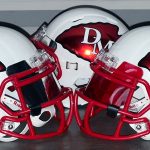
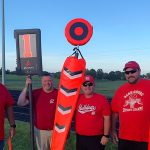
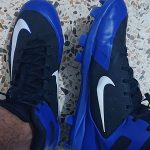
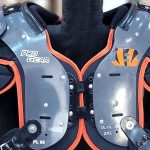
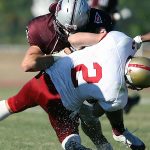
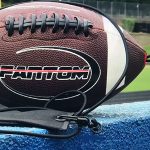
Ashley Hopkinson